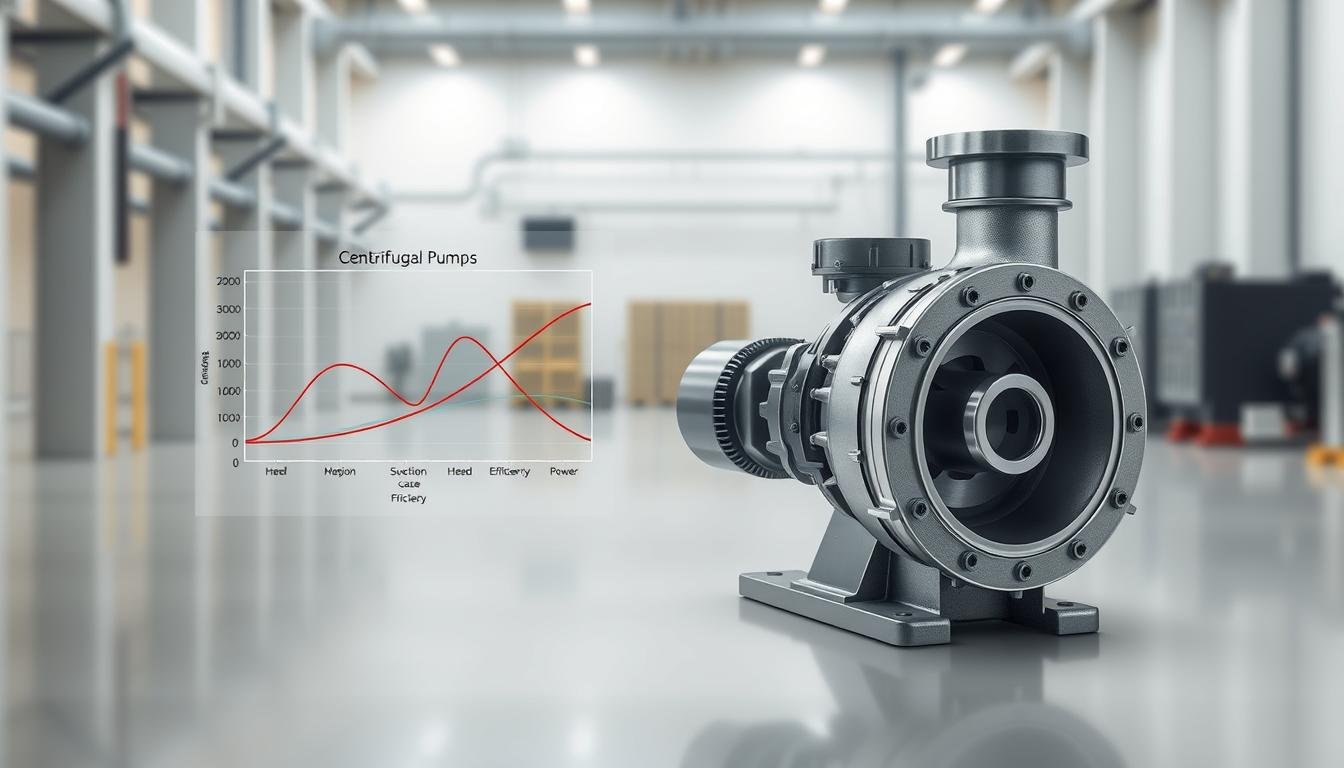In the world of fluid transport, knowing about pump characteristics is key. These devices, powered by advanced technology, move liquids and gases. They are used in many fields, like construction, agriculture, and wastewater management.
Factors like flow rate, head, efficiency, and power consumption are important. Understanding fluid dynamics helps choose the right pumps for each job. This knowledge is the first step to learning about different pumps and their uses.
Understanding Pump Characteristics:
I focus on key factors that affect pump performance. The interaction between hydraulic properties and design is vital. Pump head is central, as it shows the energy given to the fluid. A higher pump head means more flow, making the pump more efficient.
Flow rate is critical, showing how much liquid a pump can move in time. Knowing how flow rate and pump head relate helps check if a pump works well. Pump efficiency is also important, showing how well energy is used. High efficiency means better performance and lower costs.
The fluid’s hydraulic properties are also key in choosing and using pumps. Viscosity, density, and temperature affect pump performance. By considering these, I can make sure pumps work well in different situations.
Types of Pumps and Their Applications:
Knowing the different types of pumps is key to picking the right one for the job. Centrifugal pumps are great at moving fluids because they use rotational energy. They’re perfect for tasks like water treatment and chemical processing in industries.
Positive displacement pumps are better at handling thick fluids. They work by pushing a set amount of fluid through the discharge. These pumps are used in both big industries and homes for moving oils and paints.
Submersible pumps are made to work underwater. They’re vital for tasks like drainage and sewage management. In homes, they help pump water from basements or pools, showing their wide use.
By understanding these pumps, I can choose the best one for any project. Each pump type has its own role, ensuring they work well in different places.
Choosing the Right Pump for Your Needs:
Choosing a pump involves looking at several key factors. First, I check the flow rate and head. These are important for sizing the pump right. This makes sure it fits my specific needs.
Then, I consider the fluid’s properties like viscosity and temperature. These affect the pump’s design for best performance. I also think about the power source, like electric, hydraulic, or gas.
It’s important to think about how easy it is to install and maintain the pump. Systems with monitoring can make upkeep simpler and more reliable. My aim is to pick a pump that meets my needs and offers value over time.
Pump Maintenance and Longevity:
Effective pump maintenance is key to extending pump life and ensuring top performance. Regular checks of pump parts help spot issues early. I follow a detailed maintenance plan, which includes lubricating parts, checking for leaks, and monitoring vibrations.
Addressing small repairs quickly is vital. Ignoring minor issues can lead to costly repairs and downtime. Regular inspections help me catch problems early, keeping the pump running smoothly.
Dedicating time to maintenance greatly helps pumps last longer. Regular care reduces breakdown risks and boosts equipment durability. This ensures reliable service for many years.
Innovations in Pump Technology:
The pump technology world is changing fast. Smart pumps are leading the way with advanced sensors and controls. They make operations more efficient and provide real-time data for better adjustments.
Energy-efficient pumps are also gaining attention. They use less power but perform well. This saves money and helps the environment. It’s now a key part of being eco-friendly.
IoT in pumps is another big step. It connects pumps to larger systems. This gives insights for better maintenance and longer pump life. Following these trends is key for companies to succeed in the fluid transfer industry.
Pump characteristics and applications
